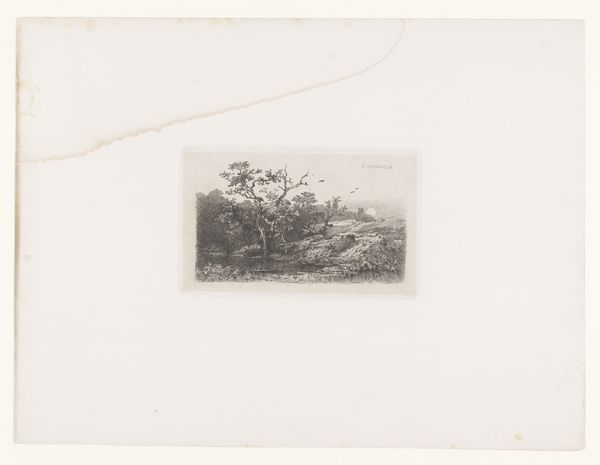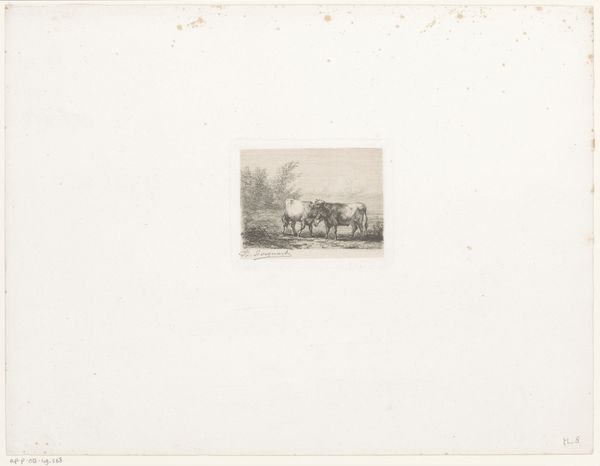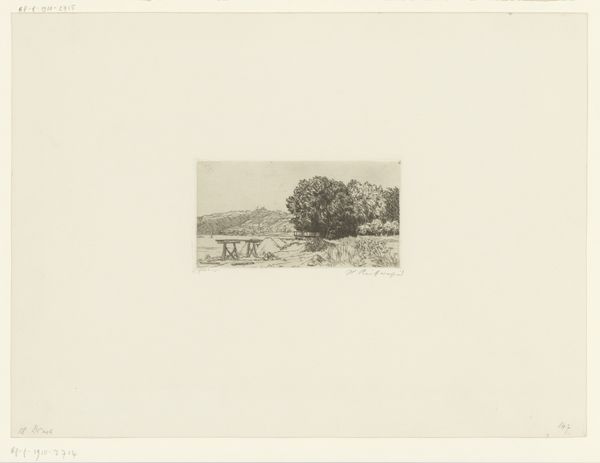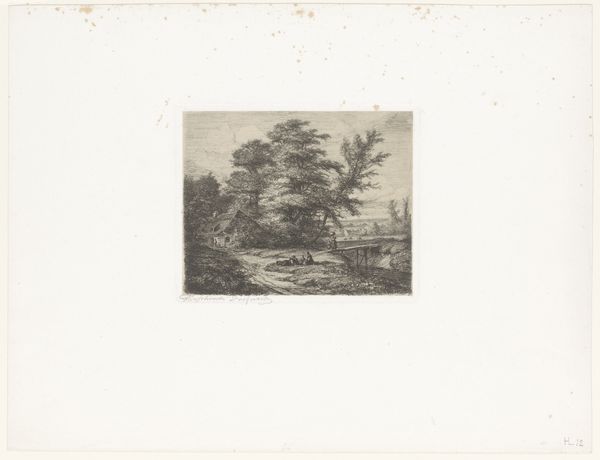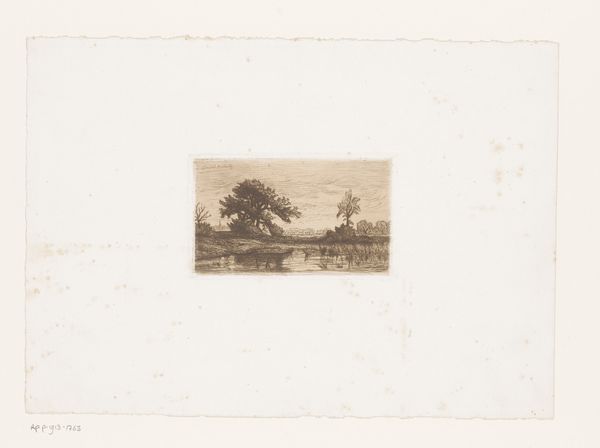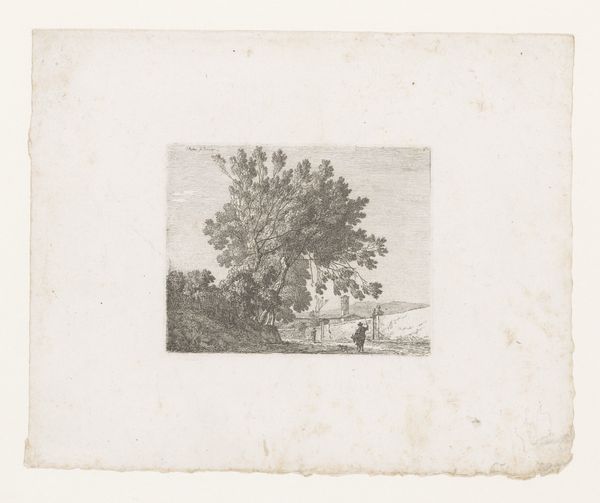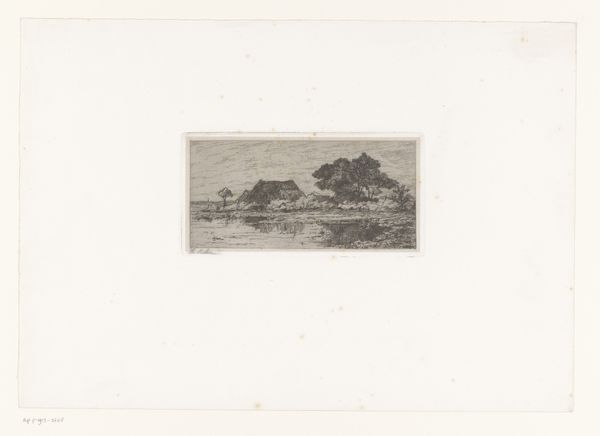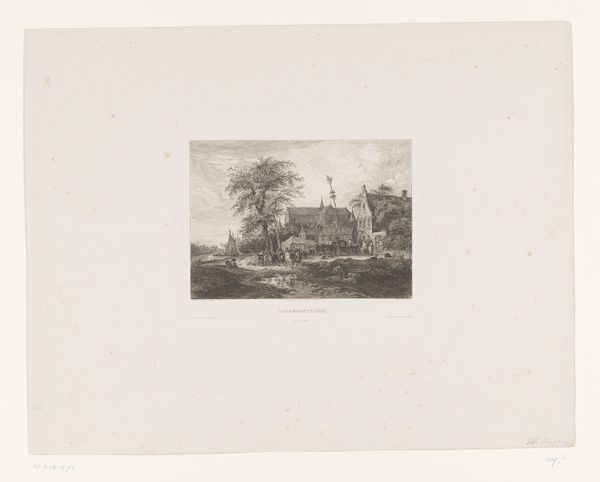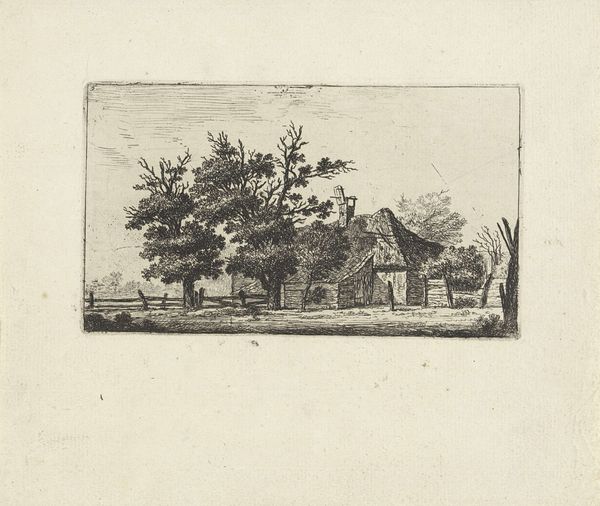
drawing, print, etching, paper, ink
#
drawing
# print
#
etching
#
landscape
#
paper
#
form
#
ink
#
romanticism
#
line
#
realism
Dimensions: height 167 mm, width 194 mm
Copyright: Rijks Museum: Open Domain
Louis Marvy made this print, titled 'Farmhouse with white fence,' using etching sometime in the mid-19th century. The image presents a humble rural scene. But it also makes us think about the social conditions that shape artistic production. In 19th-century Europe, urbanization and industrialization were rapidly changing the social and economic landscape. Artists like Marvy often turned to rural scenes as a form of escapism. This etching, with its focus on the simple, rustic life of the countryside, could be seen as a response to the increasing alienation and social dislocation caused by industrialization. The farmhouse, with its white fence, becomes a symbol of stability and tradition in a rapidly changing world. To understand the cultural significance of this work, the historian might turn to period literature, social surveys, and institutional records. Understanding these social and institutional contexts brings a richer understanding of the art.
Comments
No comments
Be the first to comment and join the conversation on the ultimate creative platform.
